By Amnon Gavish, EVP of Corporate Development & Strategy
Due to the COVID-19 crisis, PEOs’ and HROs’ services are expected to expand beyond their traditional customer zones (See Oliver Wyman: The Potential New Normal in Insurance Products). As a result, they may also have an opportunity to play a major role in fixing our broken healthcare market.
We already know that in order to bring the healthcare market back to sanity, there is an urgent need to create open-market dynamics, specifically through behavioral change among consumers. This requires equipping consumers with relevant medical price and quality information for the services they are looking for, while simultaneously incentivizing them to behave like real shoppers, typically through financial perks.
Functioning as the HR team for their employer customers, HROs and PEOs sit at the junction which connects financial benefits, health benefits, and compliance products. Their unique position enables them to build integrated services and help design and implement strategies across these three areas, ideally with the goal of transforming the healthcare market into an open market, where employees shop for cost-effective medical procedures. Their negotiation power allows them to establish a multi-vendor marketplace, giving the employees a variety of products from multiple carriers and administrators to choose from.
Employees would typically use the PEO/HRO portal/app as their go-to gateway for all their benefits, which allow these organizations to offer premium services to relevant groups within their employee population, and make these services very accessible to the employees.
Imagine the possibilities
HROs and PEOs have access to the historic data of their employer customers and can use it to run sophisticated analysis to identify places they can save cost for their employers and for their employees. As such, they can then serve as advisors to the employers, designing health plans that best fit them and their employees.
When employees go to the PEO/HRO portal around open enrollment, they can provide tools for the employees to better understand the different options, driving more educated decisions between, for example, High Deductible Health Plans (HDHP) and regular plans. Such tools will reduce the ignorance and confusion typically involved with plan selection.
Now comes the fun part – imagine that the PEO now provides to employees who have incentive to care about test and procedure costs with a medical shopping tool to allow them to choose cost-effective medical procedures and avoid overpriced facilities. To assure all plan design options provide incentives to avoid overpriced facilities, how about offering employees rewards for effective shopping, dollar rewards which automatically be deposited to their HSA, HRA or accrue as a deductible or premium credit, administered by the PEO/HRO.
And all the above information is available for the employee at the palm of their hand to monitor in real time from the PEO/HRO employee benefit app. Isn’t it fun to see your saving accounts accumulating rewards? It’s almost like a game.
On top of all of that, imagine providing the employer with a dashboard to monitor the program effectiveness and advise internal communications to drive the desired behavioral change.
Sound like science-fiction? Well, not really. The fact that PEOs/HROs serve as a one-stop-shop for all benefits and compliance services put them in the best position to offer integrated services and enormous added value to their customers, while serving the greater good of fixing our healthcare system.
Where does regulatory compliance kick in?
The Transparency in Coverage rule is looming around the corner. Soon, all employers, fully- or self-insured, will be required by the Department of Labor to offer similar medical shopping tools to all their employees. HROs and PEOs will add another service to their bucket, just like COBRA compliance.
What’s in it for them?
Beyond contributing to the ‘greater good’ of stopping the vicious cycle of ever-growing premiums and deductible costs, building and offering these cross-benefits services will increase the value of PEOs/HROs in the eyes of their employer customers. They are now becoming the trusted advisor and integrator for their clients. It will allow them to expand to new zones, as more and more employers of larger sizes start to consider them as an alternative to internal HR departments or expensive external advisors.
Moreover, PEOs/HROs offer choice. They leverage their negotiation power to purchase the best products from variety of providers – both financial and medical. Enriching their offering with carrier-agnostics tools will only strengthen their position, both with their customers and their vendors.
And strengthened positions and highly integrated services can also represent new revenue and profit opportunities for PEOs/HROs.
About MMS Analytics, Inc. dba MyMedicalShopper™
MMS Analytics, Inc. dba MyMedicalShopper™ delivers technology, products, and services to produce meaningful savings to group health plans and their participants from the overall cost of their healthcare benefits. The company was founded on the belief that fixing the broken healthcare marketplace required the combination of alignment of financial incentives, medical price transparency and the reduction of administrative overhead with employer group knowledge and change management. The company empowers employers and their employees with the ability to choose care based on price, quality, and convenience with unprecedented access to the secretive prices negotiated between insurance networks and medical facilities. Using big data, machine learning, deep analytics and intuitive user experiences, MyMedicalShopper arms group health plans with the tools and teaching necessary to recapture a meaningful portion of the 41% average over-spend waisted on vendors of overpriced tests and procedures.
